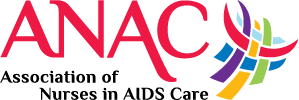Thank you for your interest in CCO content. As a guest, please complete the following information fields. These data help ensure our continued delivery of impactful education.
Become a member (or login)? Member benefits include accreditation certificates, downloadable slides, and decision support tools.

Professor
Department of Pharmacy Practice and Science
University of Maryland Baltimore School of Pharmacy
Clinical Pharmacist
University of Maryland Midtown THRIVE Program
Baltimore, Maryland
Neha Pandit, PharmD, AAHIVP, BCPS: researcher: Theratechnologies.
Key Takeaways
PrEP Inequities by Race
In 2021, the CDC guidelines for HIV pre-exposure prophylaxis (PrEP) recommended that PrEP be discussed with all sexually active patients. A PrEP use gap has been widely known for many years, with only 25% of eligible individuals being prescribed PrEP in 2020, but inequities in PrEP uptake also have been noted. The uptake of PrEP has continued to rise since its approval in 2012, but Black and Hispanic/Latinx people have had a lower PrEP-to-need ratio (PNR)―the number of PrEP users divided by the number of new diagnoses―compared with White people.
Barriers that have been identified as leading to racial inequities of PrEP use include medical mistrust, transportation, local access to PrEP-prescribers, racism, and homophobia. Although demographics in various parts of the country may differ, patient education through community organizations and active engagement in the community may lead to increased medical trust and improved knowledge of PrEP.
PrEP Inequities by Gender Identity
CDC data show that only 10% of at-risk cisgender women were prescribed PrEP in 2019. Why is this number so low? Barriers to PrEP uptake in cisgender women include, but are not limited to, lack of information, preference for barrier protection again sexually transmitted infections and pregnancy, and competing priorities.
Many cisgender women may opt to receive care for family planning and sexually transmitted infections in a primary care or family planning center. This provides a unique opportunity for patients to receive PrEP in settings in which they are already engaged. Combining those services may improve patient access and uptake to PrEP.
Transgender women account for 2% of new HIV diagnoses in the United States, but only 17% of this population is receiving PrEP. Barriers to PrEP uptake in this patient population overlap with many others, but “compound stigma” and negative community opinions have been particularly prominent for transgender women. In addition to stigma, competing health priorities with feminizing hormone therapy (FHT) and perceived drug–drug interactions (DDIs) are barriers to PrEP uptake.
Healthcare professionals providing FHT should consider HIV risk and discuss PrEP with patients to improve uptake in transgender women. This allows for a safe and inviting environment for patients to obtain PrEP, as well as evaluation and education on the general lack of DDIs with FHT.
PrEP Inequities by Age
Patients 13-24 years of age have a low PNR compared with older adults. Studies in young adults have shown decreased adherence to medications for various chronic disease states, including HIV. Barriers to PrEP uptake in the younger population, in addition to those already discussed based on race and gender identity, include lack of support and substance use.
Studies have shown improvement in medication adherence in adolescents through the use of peer-based counseling, same-day pill starts, extended pill supplies, and technology such as mobile apps, text messaging, and social networks. Although most studies to improve medication adherence in this population occurred prior to the advent of long-acting injectable (LAI) medications, it is possible that LAI use may improve medication adherence in the young adult and adolescent population.
PrEP Inequities in PWID
The CDC recommends that PrEP be combined with substance use disorder treatment for people who inject drugs (PWID). Syringe service programs (SSPs) are ideal for combining PrEP education and uptake with substance use interventions. It is possible that those who use SSPs are less likely to share syringes and therefore are at a lower risk of HIV acquisition, but it was noted in one survey that only 1 in 4 PWID receive all syringes from SSPs. SSPs and other substance use disorder treatment centers are an ideal venue for HIV risk reduction and to educate patients and the community on PrEP.
Provider PrEP Barriers
PrEP uptake in general has been hindered by healthcare professional barriers that include time constraints, perceived complexity of regimens, insurance coverage, and discomfort discussing sexual histories and behaviors. Initiatives such as same-day PrEP initiation, PrEP via telemedicine, and pharmacy-initiated PrEP have been implemented successfully to aid in increasing efficiency in delivering PrEP services.
Your Thoughts?
What are you doing in your practice to improve equity of PrEP use? Leave a comment and join the discussion.

Contact Clinical Care Options
For customer support please email: customersupport@cealliance.com
Mailing Address
Clinical Care Options, LLC
12001 Sunrise Valley Drive
Suite 300
Reston, VA 20191
You are now leaving the CCO site. The new destination site may have different terms of use and privacy policy.